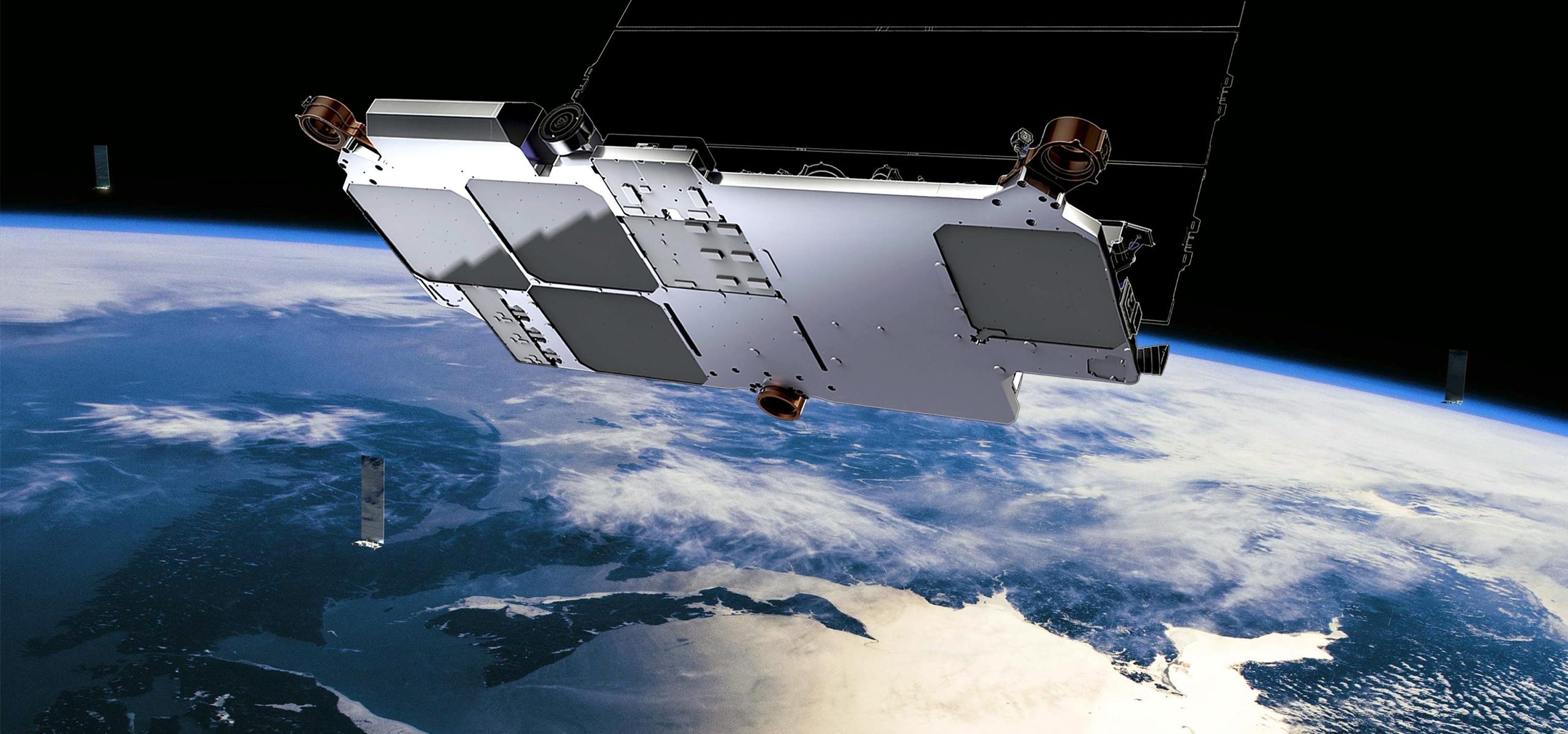
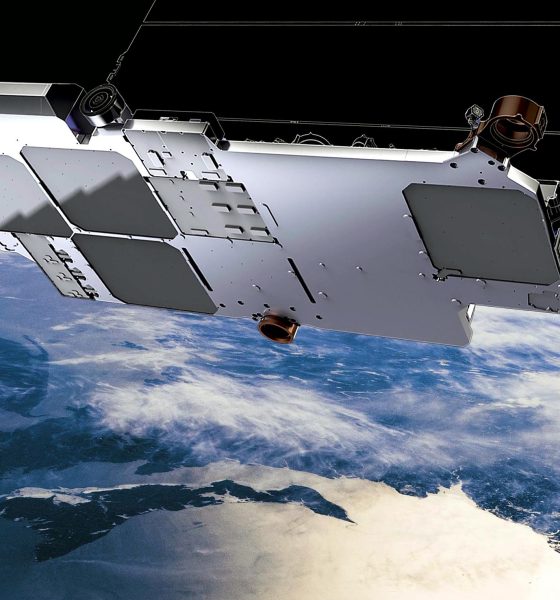
News
SpaceX says upgraded Starlink satellites have better bandwidth, beams, and more
Just hours ago, SpaceX successfully launched its second batch of 60 Starlink satellites, featuring a variety of upgrades as part of the move from v0.9 to v1.0 spacecraft. During SpaceX’s launch webcast, the hosts revealed a number of intriguing new details about those upgrades, shedding a bit more light on what exactly has changed.
SpaceX launched its first dedicated Starlink mission in May 2019, placing 60 “v0.9” satellites in low Earth orbit (LEO) in what was essentially a beta test at an unprecedented scale. At the time, SpaceX and CEO Elon Musk disseminated a substantial amount of information, essentially taking the veil off of (part of) the company’s Starlink satellite program. In terms of the basics, Starlink v0.9 satellites were said to weigh approximately ~225 kg (500 lb) apiece, although the final mass – said to be the heaviest payload SpaceX had ever launched – suggested that that figure excluded the mass of krypton propellant.
All told, Musk said that the payload weighed ~18.5 tons but never clarified whether that was in imperial or metric units, leaving a potential range of 16,700-18,500 kilograms (36,800-40,800 pounds). In general, Musk was quite confident that SpaceX’s custom-built phased array antennas were effectively the best in the world even in their v0.9 beta-test iteration. Additionally, he noted that inter-satellite optical (i.e. laser) links would have to wait a generation or two before becoming part of the operational constellation.
Ch-ch-ch-changes
With SpaceX’s Starlink-1 launch, the second 60-satellite mission, the company debuted Starlink ‘v1.0’ satellites with a range of changes and upgrades that fall under two main categories: structures and communications.
Prior to the November 11th webcast, SpaceX’s official pre-launch press kit was far less revealing than Starlink v0.9’s but did note that v1.0 satellites have been upgraded to be “100% demisable”. This means that when each spacecraft reenters Earth’s atmosphere, everything down to the last shred of mylar is now expected to burn up before reaching the ground, reducing the (already miniscule) risk of debris harming people or property. Similarly, SpaceX implied several months before launch that v1.0 spacecraft would include tweaks to limit their reflectiveness after the astronomy community stoked fears about potential impacts.

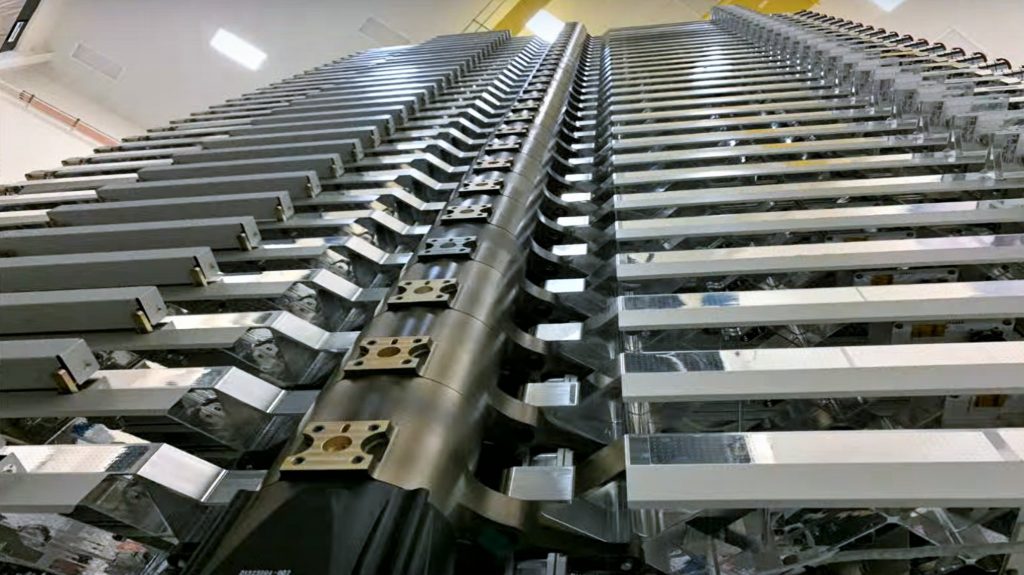
Aside from a general improvement to the overall visual fit-and-finish of the v1.0 spacecraft, SpaceX’s official comments on the matter indicated that the most substantial changes between v0.9 and v1.0 were more related to each spacecraft’s advanced electronics and payloads. In the case of Starlink, each satellite’s primary payload is a high-performance suite of electronically-steered phased array antennas. Initially developed to improve the flexibility of tracking and scanning radars used by military fighter aircraft, phased array antennas (and radar) allow multiple beams to be aimed without physically moving the antenna.
SpaceX says that Starlink v1.0 satellites added a number of Ka-band antennas alongside upgraded Ku-band hardware similar to what was installed on Starlink v0.9. Ka and Ku refer to similar but different communications frequencies, with Ku-band generally offering greater reliability and cloud/rain tolerance, while Ka-band is a bit more sensitive to environmental factors but offers a substantially higher theoretical bandwidth.
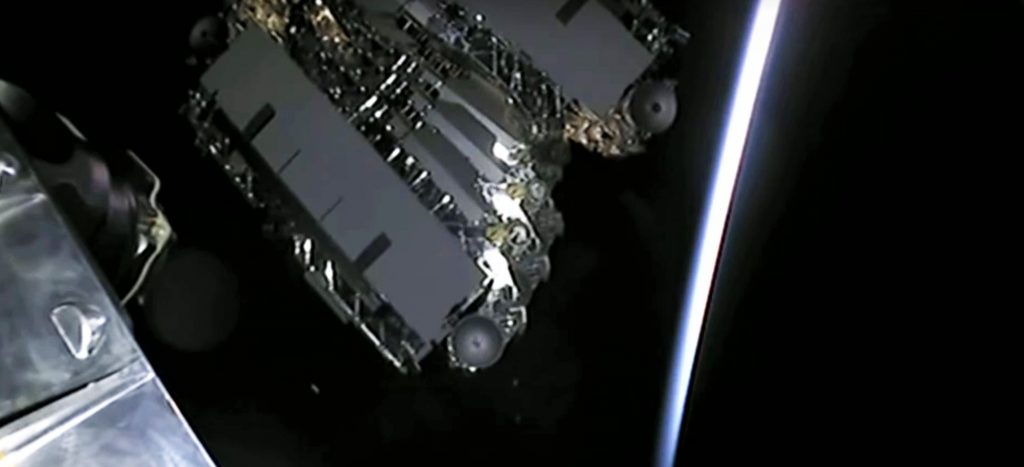
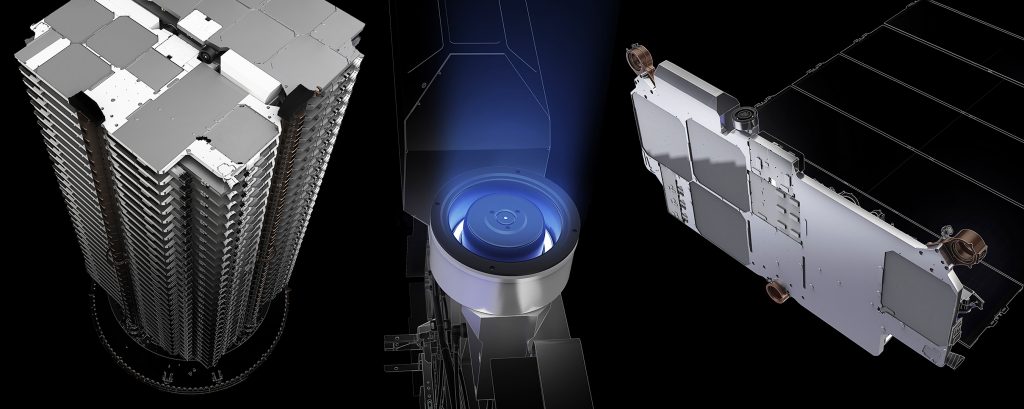
According to SpaceX engineers speaking during the Starlink-1 launch webcast, Starlink v1.0 satellites offer an unexpected 400% increase in overall bandwidth, meaning they can theoretically transmit four times as much data per any given second. Additionally, Starlink v1.0 satellites were said to feature antennas with twice as many steerable beams, meaning that they can effectively serve two times as many regions simultaneously. It’s unclear if the addition of Ka-band antennas is the sole source of these substantial improvements.
Furthermore, during the Starlink v0.9 launch, SpaceX CEO Elon Musk indicated that the 60 satellites represented a bandwidth of more than 1 terabit per second (Tbps), translating to ~17 Gbps per satellite. More likely than not, Musk was speaking aspirational and the v0.9 satellites actually represented more like ~200-300 Gbps worth of throughput, with the additional of Ka-band antennas and perhaps general technology upgrades bringing v1.0 satellites to a nominal ~17 Gbps apiece.
For now, 60 Starlink v1.0 satellites are now in orbit and are rapidly spreading out after their bizarre but effective blob-style deployment. With any luck, all 60 will successfully deploy their solar arrays and begin propelling themselves towards their final operating orbits with krypton-fueled ion thrusters. Stay tuned for updates from SpaceX!
Check out Teslarati’s Marketplace! We offer Tesla accessories, including for the Tesla Cybertruck and Tesla Model 3.

Elon Musk
Elon Musk’s X will start using a Tesla-like software update strategy
The initiative seems designed to accelerate updates to the social media platform, while maintaining maximum transparency.

Elon Musk’s social media platform X will adopt a Tesla-esque approach to software updates for its algorithm.
The initiative seems designed to accelerate updates to the social media platform, while maintaining maximum transparency.
X’s updates to its updates
As per Musk in a post on X, the social media company will be making a new algorithm to determine what organic and advertising posts are recommended to users. These updates would then be repeated every four weeks.
“We will make the new 𝕏 algorithm, including all code used to determine what organic and advertising posts are recommended to users, open source in 7 days. This will be repeated every 4 weeks, with comprehensive developer notes, to help you understand what changed,” Musk wrote in his post.
The initiative somewhat mirrors Tesla’s over-the-air update model, where vehicle software is regularly refined and pushed to users with detailed release notes. This should allow users to better understand the details of X’s every update and foster a healthy feedback loop for the social media platform.
xAI and X
X, formerly Twitter, has been acquired by Elon Musk’s artificial intelligence startup, xAI last year. Since then, xAI has seen a rapid rise in valuation. Following the company’s the company’s upsized $20 billion Series E funding round, estimates now suggest that xAI is worth tens about $230 to $235 billion. That’s several times larger than Tesla when Elon Musk received his controversial 2018 CEO Performance Award.
As per xAI, the Series E funding round attracted a diverse group of investors, including Valor Equity Partners, Stepstone Group, Fidelity Management & Research Company, Qatar Investment Authority, MGX, and Baron Capital Group, among others. Strategic partners NVIDIA and Cisco Investments also continued support for building the world’s largest GPU clusters.
News
Tesla FSD Supervised wins MotorTrend’s Best Driver Assistance Award
The decision marks a notable reversal for the publication from prior years, with judges citing major real-world improvements that pushed Tesla’s latest FSD software ahead of every competing ADAS system.

Tesla’s Full Self-Driving (Supervised) system has been named the best driver-assistance technology on the market, earning top honors at the 2026 MotorTrend Best Tech Awards.
The decision marks a notable reversal for the publication from prior years, with judges citing major real-world improvements that pushed Tesla’s latest FSD software ahead of every competing ADAS system. And it wasn’t even close.
MotorTrend reverses course
MotorTrend awarded Tesla FSD (Supervised) its 2026 Best Tech Driver Assistance title after extensive testing of the latest v14 software. The publication acknowledged that it had previously criticized earlier versions of FSD for erratic behavior and near-miss incidents, ultimately favoring rivals such as GM’s Super Cruise in earlier evaluations.
According to MotorTrend, the newest iteration of FSD resolved many of those shortcomings. Testers said v14 showed far smoother behavior in complex urban scenarios, including unprotected left turns, traffic circles, emergency vehicles, and dense city streets. While the system still requires constant driver supervision, judges concluded that no other advanced driver-assistance system currently matches its breadth of capability.
Unlike rival systems that rely on combinations of cameras, radar, lidar, and mapped highways, Tesla’s FSD operates using a camera-only approach and is capable of driving on city streets, rural roads, and freeways. MotorTrend stated that pure utility, the ability to handle nearly all road types, ultimately separated FSD from competitors like Ford BlueCruise, GM Super Cruise, and BMW’s Highway Assistant.
High cost and high capability
MotorTrend also addressed FSD’s pricing, which remains significantly higher than rival systems. Tesla currently charges $8,000 for a one-time purchase or $99 per month for a subscription, compared with far lower upfront and subscription costs from other automakers. The publication noted that the premium is justified given FSD’s unmatched scope and continuous software evolution.
Safety remained a central focus of the evaluation. While testers reported collision-free operation over thousands of miles, they noted ongoing concerns around FSD’s configurable driving modes, including options that allow aggressive driving and speeds beyond posted limits. MotorTrend emphasized that, like all Level 2 systems, FSD still depends on a fully attentive human driver at all times.
Despite those caveats, the publication concluded that Tesla’s rapid software progress fundamentally reshaped the competitive landscape. For drivers seeking the most capable hands-on driver-assistance system available today, MotorTrend concluded Tesla FSD (Supervised) now stands alone at the top.
News
Elon Musk’s Grokipedia surges to 5.6M articles, almost 79% of English Wikipedia
The explosive growth marks a major milestone for the AI-powered online encyclopedia, which was launched by Elon Musk’s xAI just months ago.

Elon Musk’s Grokipedia has grown to an impressive 5,615,201 articles as of today, closing in on 79% of the English Wikipedia’s current total of 7,119,376 articles.
The explosive growth marks a major milestone for the AI-powered online encyclopedia, which was launched by Elon Musk’s xAI just months ago. Needless to say, it would only be a matter of time before Grokipedia exceeds English Wikipedia in sheer volume.
Grokipedia’s rapid growth
xAI’s vision for Grokipedia emphasizes neutrality, while Grok’s reasoning capabilities allow for fast drafting and fact-checking. When Elon Musk announced the initiative in late September 2025, he noted that Grokipedia would be an improvement to Wikipedia because it would be designed to avoid bias.
At the time, Musk noted that Grokipedia “is a necessary step towards the xAI goal of understanding the Universe.”
Grokipedia was launched in late October, and while xAI was careful to list it only as Version 0.1 at the time, the online encyclopedia immediately earned praise. Wikipedia co-founder Larry Sanger highlighted the project’s innovative approach, noting how it leverages AI to fill knowledge gaps and enable rapid updates. Netizens also observed how Grokipedia tends to present articles in a more objective manner compared to Wikipedia, which is edited by humans.
Elon Musk’s ambitious plans
With 5,615,201 total articles, Grokipedia has now grown to almost 79% of English Wikipedia’s article base. This is incredibly quick, though Grokipedia remains text-only for now. xAI, for its part, has now updated the online encyclopedia’s iteration to v0.2.
Elon Musk has shared bold ideas for Grokipedia, including sending a record of the entire knowledge base to space as part of xAI’s mission to preserve and expand human understanding. At some point, Musk stated that Grokipedia will be renamed to Encyclopedia Galactica, and it will be sent to the cosmos.
“When Grokipedia is good enough (long way to go), we will change the name to Encyclopedia Galactica. It will be an open source distillation of all knowledge, including audio, images and video. Join xAI to help build the sci-fi version of the Library of Alexandria!” Musk wrote, adding in a later post that “Copies will be etched in stone and sent to the Moon, Mars and beyond. This time, it will not be lost.”








